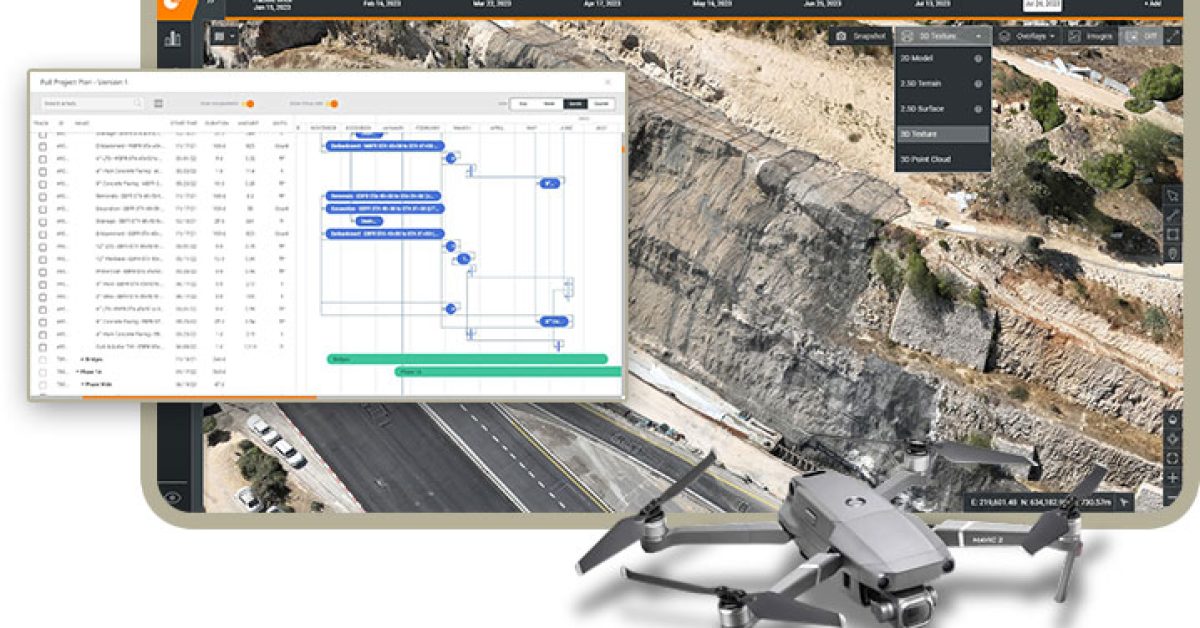Introduction
As we prepared for our webinar, “Leveraging Technology to Win More Work in Heavy Civil ConstructionCivil construction is a branch of engineering that involves the design, construction, and maintenance of the built envir… More,” Drew Olsen, P.E. a Strategic Advisor at Procore, sat down with the Datumate marketing team to talk about the evolution he sees in the construction industry, “the fear of failure often hinders the construction industry, but the concept of ‘fail fast, fail forward’ is gaining traction as a means to drive progress and innovation. This mindset, commonly associated with technology, is also valuable for engineers and contractors.” In this post, we’ll discuss what we learned from Olsen and his thoughts about embracing failure as a learning opportunity so that the industry can uncover new solutions and push the possible boundaries. In addition, we’ll cover how successful projects in construction rely on strong partnerships and collaboration, as well as how the technological advancements in the construction industry create a perfect storm of opportunities for innovation and efficiency improvement.
Fail Fast, Fail Forward: Embracing Failure in the Construction Industry
In the construction industry, the fear of failure can often hold us back from progress. However, “fail fast, fail forward” has gained traction recently, highlighting the importance of learning from our mistakes and using them as stepping stones for improvement. “This mindset, although more commonly associated with technology, can also be incredibly valuable for engineers and contractors. By taking risks, trying new things, and not being afraid to fail, we can uncover new solutions and push the boundaries of what is possible.” Whether testing new construction methods or adopting innovative technologies, embracing failure as a learning opportunity can lead to significant advancements in the industry.
The Power of Partnerships: Collaboration for Success
Successful projects in the construction industry often rely on strong partnerships. “While the relationship between engineers and owners has typically been collaborative, the same cannot always be said for the relationship between general contractors (GCs) and owners. However, this is starting to change,” says Olsen, “The shift towards more collaborative contracting methods fosters a more friendly and cooperative environment between GCs and owners. This change is crucial because partnerships prioritizing mutual understanding and shared goals can create an environment fostering innovative solutions and better outcomes.” By aligning interests, sharing knowledge, and working together from the early stages of a project, contractors and owners can leverage each other’s strengths and overcome challenges more effectively. This collaborative approach benefits individual projects and can potentially drive positive change on a larger scale within the construction industry.
Technology’s Impact on the Construction Industry
“Technology has profoundly impacted our careers in the construction industry. As a design engineer, I witnessed the evolution of technology firsthand. For 25 years, I utilized various technological tools to progress in my career, ultimately landing a position at ProcoreProcore is a user-friendly software that makes managing construction projects simpler and more efficient. It’s like a di… More. Leveraging technology has allowed me to stay ahead of the curve and easily navigate the industry. Technology has been a game-changer for me, and I’m sure many others in the field have experienced similar advancements.”
The Perfect Storm: Industry Opportunities
There has never been a better time for the construction industry to embrace technology. The convergence of circumstances, including the COVID-19 pandemic and increased funding for infrastructure projects, has created a perfect storm of opportunities. “The backlog of projects has created a sense of urgency to adopt technology and improve efficiency,” says Olsen, “with the introduction of initiatives like the Advanced Digital ConstructionDigital construction, also known as construction technology or construction 4.0, refers to the use of digital tools and … More Management Systems (ADCMS), which recently received $34 million in funding, the industry is on the brink of a major transformation.” The barriers and excuses that once hindered technology adoption are gone; now is the time for collaboration and innovation for the greater good of the construction industry.
Partnerships: A Key to Adopting New Technology
Olsen is enthusiastic about the rapidly evolving world of technology, “staying ahead of the game is crucial. That’s why it’s important to forge strong partnerships with customers and other like-minded technology providers.” Collaboration is vital, as no single solution can fit every need. We can all thrive and avoid being left behind by working together as General Contractors, subcontractors, or designers.
The Power of Open Technology and Partnerships
Openness is crucial when it comes to adopting new technology. One solution will only work for some, and that’s where partnerships come in. We can share our expertise and bridge existing gaps by collaborating with customers and other stakeholders. Don’t be afraid to take a calculated risk and embrace innovation. Overcome your fears by focusing on the benefits of partnerships and the power of working together. With the right people on board, anything is possible, and you can navigate the ever-changing technology landscape successfully.
Engaging with Customers Outside of Projects
One of the keys to building solid relationships with your customers is engaging with them outside of project work. It’s essential to stay in touch with them and understand what they’re doing, not just when you’re chasing a proposal. Engaging with customers outside of projects can help you build trust and position yourself as a valuable partner. There are several ways you can engage with your customers outside of projects. A straightforward way is to share helpful resources, such as fact sheets or mobile apps, that can make their lives easier.
Additionally, staying active in industry conferences and webinars can provide opportunities to network and connect with customers. Take advantage of these events to discuss a potential customer’s challenges and explore potential partnership opportunities. By engaging with your customers outside of projects, you can show that you genuinely care about their success and are committed to providing value beyond just the work you do together.
Must Attend Conferences for Engagement
Attending conferences can be a great way to connect with industry leaders and decision-makers when engaging with customers outside of projects. The AASHTO Committee on Construction conference, for example, is highly recommended. It provides a captive audience for four days and brings together agencies from all over. The AASHTO conference is ideal for meaningful conversations and building relationships with owners. Additionally, consider attending conferences hosted by professional organizations like AGC, ENR, ASCE, ACEC, and AASHTO. These events often have technology-focused sessions and attract industry experts. Attending these conferences lets you stay updated with the latest industry trends, connect with potential customers, and find opportunities to collaborate on future projects. Engaging with customers at conferences can be a game-changer for building solid relationships and positioning yourself as a trustworthy partner.
Interested in hearing more from Drew Olsen? Check out our recent webinar, Leveraging Technology to Win Work in Construction.



